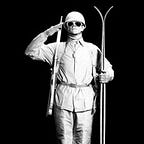First, some history. In the incredible historical novel “Undaunted Courage,” which details the Lewis and Clark journey across the West, author Stephen Ambrose reminds us that in 1801 the United States had a population of roughly 5.3 million. Two-thirds lived within 50 miles of tidewater and only four roads crossed the Appalachian Mountains. The heart of the West, from Missouri to California, was unmapped, unknown, and not even part of the Union.
By the late 1800s, all that had changed. People could travel from coast to coast on the Transcontinental Railroad. Native American society had been crushed and forced into reservations and assimilation. Some 60 million bison that once carpeted the Great Plains had been reduced to just a few dozen. The Grand Canyon had been floated and mapped; the Grand Teton climbed. In 1890, the U.S. Census Bureau declared the frontier officially closed, a symbol of America’s ruthless might and ingenuity. It also meant that some of the country’s most scenic and rare landscapes were in jeopardy.
Given our insatiable thirst for natural resources and the speed with which we devour them and annihilate entire species, it is very possible that had it not been for a handful of visionary conservationists in the early 20th century, the natural heritage of the United States would have been, if not erased, compromised forever. In Yellowstone, the military had to be called in to protect the park from vandals and poachers. Along the coast, old-growth forests were clear-cut at alarming rates. Hetch Hetchy, just one valley removed from Yosemite, had been flooded by a dam. Rodeo grandstands and tourist traps were crowding the base of the Tetons.
With the creation of the National Park Service in 1916, however, Americans had the means to protect their most unique lands and the wildlife they shelter for future generations. One hundred years later, we must remember that without these monuments of refuge and solitude, as Wallace Stegner once wrote about the value of wilderness, “something will have gone out of us as a people.” Indeed, these parks remind us where we came from, and that we belong to something greater than ourselves.
Perhaps the last thing the people of 1916 expected was for the parks to be used as a playground for skiing. It’s still a rarity, even in Grand Teton, which is known for its good ski terrain, relative to its summer visitation. In the north country, most parks all but shut down in the winter, with few facilities and even fewer plowed roads. This makes them even more remote, wild, and unforgiving. But if you put in the effort, you’ll have a ski experience unlike any other in the world.
Recently we sent teams, led by KGB Productions, to five national parks — Yosemite, Glacier, Grand Teton, Yellowstone, and Olympic — to document their experiences. What they found casts these parks in a light rarely seen by anything not using four legs or wings. They, along with the writers we enlisted to document their own journeys in these pages, often traveled long distances across rugged terrain, accessing places that still exist much as they have for thousands of years. They were free from manmade boundaries so common to our national parks in the summer (for good reason). Which is part of the beauty of skiing. When snow covers everything, you can go pretty much wherever you want on a pair of skis. Max Hammer, a skier from Jackson Hole, says he feels like he’s getting away with something when he’s skiing the Tetons because moving so swiftly through such big mountains feels a little like cheating. Meanwhile in Glacier, an unusual, though recommended, piece of ski equipment is bear spray. Skiing in Yellowstone puts you in a realm of animals that still rule their kingdom. In Olympic, the juxtaposition of temperate rainforest and glaciated peaks is something out of the dinosaur age. And in Yosemite, John Muir’s promise of wilderness is never more apparent than in winter, when granite domes sit among the silence of freshly fallen snow. These aren’t the only national parks where one can ski, but they represent the old frontier where people are scarce and access to some of the world’s best backcountry abounds.
Ultimately, national parks give us a place to roam across unspoiled lands that existed long before we got here. If there’s anything better, it’s having the freedom, at the end of a long skin track, to ski down them.
EDITOR’S NOTE: Be sure to check out the film Monumental: Skiing Our National Parks, premiering October 20 in Denver, CO, followed by a nationwide tour. The film will be available to purchase online, as well. Additionally, POWDER produced a 150-page coffee-table hardcover book of the Monumental project. Go here for film, tour, and ticket information.
Read Parts 1–5 of Monumental: Skiing Our National Parks:
